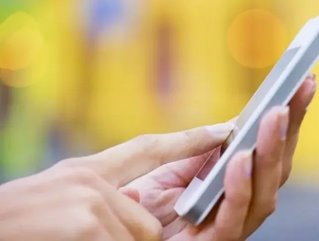Everything You Need to Know About iBeacons

Beacons could soon become a retailers’ best friend, by helping them collect consumer data and interact with shoppers. The location-based technology can be used to trigger features on customers’ smartphones, including targeted coupons, store maps and hands-free payment options.
How Do Beacons Work?
Beacons are small wireless devices that constantly broadcast radio signals to nearby smartphones and tablets. Mobile apps can pick up these signals, which trigger location-based actions.
What is an iBeacon?
iBeacon is Apple’s version of a beacon and is an off-the-shelf option for retailers. Apple has filed documents with the Federal Communications Commission, suggesting that it wants to manufacture hardware, however at the moment, iBeacon is a system built into the latest version of Apple iOS 7 mobile operating system.
As it stands, iBeacon allows iPads and iPhones to constantly scan for nearby Bluetooth devices. When iBeacon identifies a beacon, it can wake up relevant apps on someone's phone, even when an app is closed and not running in the background. Additionally, iPads and iPhones can act as beacons; they can emit beacon signals to wake up apps on other iOS devices.
Rooted in Near Field Communication (NFC) technology, Apple’s iBeacons are already proving to have more potential in terms of real-world application and uptake. Firstly, the range of NFC is tiny. That's the point; you have to physically “tap” to connect. The range for iBeacons is up to 50 metres, and yet the precision is reported to be exceptional. Before iBeacons, devices relied on GPS and Wi-Fi triangulation to pin point a location. iBeacons place you to within feet by using BLE (Bluetooth low energy) – a smarter version of Bluetooth that isn't affected by physical barriers and uses almost no battery life.
What Do Beacons Mean for Retailers?
While NFC offered retailers the novelty factor, it fails to fulfill a genuine need. However iBeacon, for the first time, offers retailers a simple, cost-effective way of connecting with customers – not only as they walk through the door, but as they browse, queue for a service or indeed make a purchase. iBeacon can be used in multiple ways; to connect with customers and welcome them to the store, to send them vouchers and discount codes, to engage with them on social media and other online networks or to take payment for goods. iBeacon has the potential to help with marketing, customer retention, data collection and sales.
Despite Apple’s very soft launch, iBeacons are causing quite a stir among retailers, with some already rolling the technology out in stores. Lord & Taylor stores across the U.S. and select Hudson Bay stores in Canada will be launching iBeacons in store over the next few weeks, offering customers insight into the future of shopping. Users will have to have the corresponding app pre-loaded to their iPhone or iPad to see the notifications.
So is this the future of shopping? One thing seems very clear: the battle to win the mobile location-tracking space has ignited. Some ideas are half-baked. As for iBeacons? Many will be watching Apple's turnover. Once again, they seem poised to steal the limelight.






